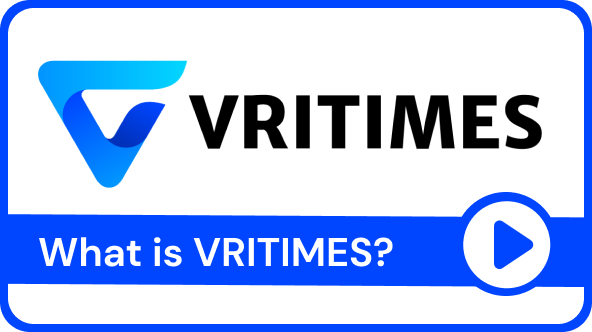/ Treasure NFT: Innovation or Scam? A Comprehensive Review of TNFT
Treasure NFT: Innovation or Scam? A Comprehensive Review of TNFT
In the rapidly evolving landscape of Web3 and digital assets, Treasure NFT (TNFT) positioned itself as a revolutionary NFT marketplace combining artificial intelligence, cross-chain integration, and innovative ownership models.
Launched in 2021, the platform aimed to solve core problems in the NFT space, such as illiquidity, speculative pricing, and high entry barriers, through advanced tech and novel mechanics like fractional ownership.
Yet, for all its bold claims and futuristic features, Treasure NFT has become one of the most controversial projects in recent crypto history. Accusations of fraud, blocked withdrawals, and a complete platform shutdown have left many investors questioning whether it was ever a legitimate operation.
In this in-depth review, we’ll explore Treasure NFT's rise and fall, its core features, TNFT latest updates, and the growing evidence that it may have been a sophisticated scam.
What Is Treasure NFT (TNFT)?
Treasure NFT was presented as a Web3-based NFT trading platform and investment system that utilized AI algorithms, gamified interfaces, and community-driven governance.
From its inception, it promised revolutionary tools for NFT staking, minting, and trading—all while offering investors daily returns ranging between 4.3% and 6.8%, and monthly returns of up to 30%.
The platform’s official domain, treasurenft.xyz, described it as the world’s first encrypted NFT marketplace offering:
1. AI-powered price adjustment for NFTs
2. Fractional NFT ownership (FNFTs)
3. Support for multiple blockchains (Ethereum, Polygon, BNB Chain, TRON, and later, Solana)
4. Integrated wallets like MetaMask and Coinbase Wallet
5. Multilingual user interface
6. Lifetime royalties for NFT creators
7. Referral rewards and community quests
Innovative Features That Attracted Attention
Treasure NFT packed its marketplace with seemingly advanced features that drew in artists, collectors, and investors alike. These included:
1. Fractional Ownership: Enabling users to co-own high-value NFTs, thereby lowering the barrier to entry.
2. Auction and Combo Sales: Allowing creators to bundle NFTs for flexible pricing and market reach.
3. Built-in Minting Tools: Facilitating easier NFT creation for artists.
4. Decentralized Governance: Letting token holders vote on platform decisions.
5. Cross-Chain Interoperability: Facilitating NFT trading across multiple blockchains.
6. Energy Efficiency: Positioning itself as a green alternative due to its use of low-energy blockchain solutions.
These innovations were further enhanced in 2025 with new updates such as:
1. Solana integration
2. Real-time AI trading algorithms
3. In-app currency rewards (e.g., Gems)
4. Decentralized storage using IPFS and Arweave
5. A faster, optimized mobile app and web dashboard
The Dark Side: Allegations and Red Flags
Despite its technological promise, Treasure NFT began to show troubling signs that raised red flags among users and crypto experts. The platform’s most serious issues include:
1. Unrealistic Profit Promises: Offering daily staking returns of 4.3–6.8% and 30% monthly profits defied conventional financial logic and mirrored the mechanics of high-yield Ponzi schemes.
2. Lack of Transparency: There was no verifiable whitepaper, team documentation, or technical audits to back the project’s ambitious claims. Details about the AI technology and its pricing model remained vague and unverified.
3. Referral-Based Growth: Treasure NFT relied heavily on user referrals to bring in new capital—another trait common in multi-level marketing (MLM) and Ponzi schemes.
4. Withdrawal Issues: By early 2025, users began reporting that withdrawals were blocked or delayed. Some users were forced to wait over 480 hours to retrieve funds—if they could at all. Support channels went silent, and the Treasure NFT official website was taken offline.
5. Abrupt Shutdown and Rebranding: In April 2025, the platform announced a shutdown and began redirecting users to a new project, NFT Gold, which claimed to offer transparency and better features. However, many experts believe this to be a classic “rug pull” followed by a rebrand to ensnare new victims.
User Reactions and Community Sentiment
The response from the crypto community has been overwhelmingly negative:
1. Trustpilot reviews labeled the platform a scam, with the majority awarding a 1-star rating.
2. YouTube videos and Telegram discussions chronicle user losses, blocked accounts, and warnings for new investors.
3. Reports from CryptoPotato and other watchdogs confirm that users lost access to funds without explanation.
Despite some loyal supporters who still believe in TNFT’s mission, the dominant narrative paints a grim picture of deception and financial loss.
Treasure NFTs in the Arbitrum Ecosystem: A Separate Story
Adding to the confusion is the existence of Treasure NFTs in the Arbitrum ecosystem, which is not affiliated with the now-defunct TreasureNFT platform. This separate project uses the $MAGIC token and focuses on interoperable digital assets for gaming.
These Treasure NFTs serve functional purposes in games like Bridgeworld, The Beacon, and Smolverse, and are part of a growing network of composable, lore-driven digital assets.
These are seen as legitimate and technically sound—unlike the now-defunct Treasure NFT marketplace.
Conclusion: Is Treasure NFT a Scam?
Based on user reports, technical analysis, and industry watchdog evaluations, it is safe to conclude that Treasure NFT (TNFT)—as promoted through treasurenft.xyz—is most likely a scam.
Warning Signs Recap:
1. Unsustainable ROI promises
2. No legal transparency or tech audits
3. Referral-based revenue model
4. Withdrawal and liquidity issues
5. Disappearance of the platform and its leadership
6. Rebranding to NFT Gold without addressing previous failures
While Treasure NFT once promised to redefine the NFT marketplace with AI and multi-chain tools, its downfall illustrates the dark side of unregulated crypto ventures. Investors are urged to approach similar platforms with extreme caution, verify all documentation, and remember the golden rule of crypto:
If it sounds too good to be true, it probably is.
Legal recourse and reporting to cybercrime authorities may be necessary for those who have already invested. For newcomers, always research thoroughly, start small, and use platforms with verified credentials and community trust.







